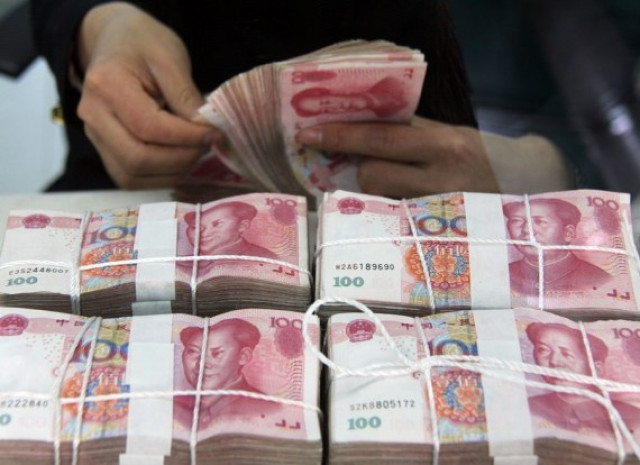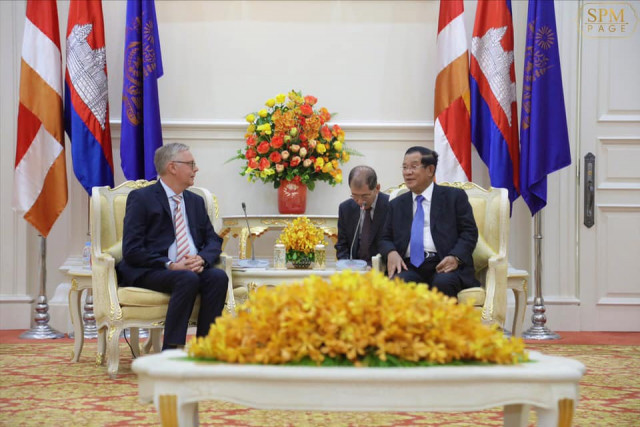Be Wary of Riel/Yuan Promotion: Analysts

- By Teng Yalirozy
- July 13, 2023 10:52 AM
PHNOM PENH – What does it mean when Cambodia moves toward the expansion of yuan payments in exchange for more riel payments in China?
Analysts say it might indicate the country’s desire to embrace yuanization, warning the country should be extra careful to reap the benefits.
On July 10, the National Bank of Cambodia (NBC) signed a Memorandum of Understanding (MoU) on “Cross-Border QR Code Payment Cooperation” with China, aiming at promoting the use of both the riel and the RMB in the countries. RMB is China’s official currency acronym for renminbi, which is also known as yuan.
“When this cooperation is fully in place, we’ll see that our citizens in China can pay via QR Code,” NBC deputy governor Chea Serey said.
“Cambodian citizens can also use the QR of Union Pay, Ali Pay and We Chat. So, about 10 million Cambodian people who have an e-wallet will easily be able to make any payment in China through this system.”
Chinese citizens who visit Cambodia will also be able to pay for services or goods through KH QR, Serey said. This was positive for future expansion of the use of both currencies.
Cambodia has allowed digital RMB payments via WeChat and Alipay at tourist attractions, mostly in Siem Reap and Sihanoukville.
Some critics questioned the benefit to the country of allowing digital transactions in yuan.
Hong Vannak, an economic researcher at the Royal Academy of Cambodia, said the cross-border QR code payments with China is only a way to assist transactions by business owners and the tourism sector as the country rebounds after COVID-19.
“I think this is just as a way to offset current or financial activities in the country to facilitate faster work,” he said.
Ear Sophal, Cambodian-American political scientist and expert in political economy, said this is just another sign of Cambodia's determination to move away from dollarization and toward yuanization.
It would not make much difference but would eventually make it simpler for Chinese visitors to spend yuan in Cambodia.
“It means removing friction from currency exchange from yuan to riel or USD when Chinese visitors come to Cambodia. It's not a bad thing for Cambodia but Cambodia should be careful,” he said.
Sophal said these cross-border transactions create more entanglements between Cambodia and China. Cambodia will be affected if there are issues with China's economy and finances.
“When China sneezes, Cambodia will catch a cold,” he said.
Can it really accelerate the use of riel?
In February, Cambodia also requested to join the Cross-Border Interbank Payment System (CIPS), China's cross-border payment scheme, to further strengthen trade with China.
Chea Serey of NBC said Cambodia, though pushing RMB payments in the country, does not encourage cash transactions as they would bring out issues such as money laundering or currency damage.
Ou Virak, political economy analyst and founder of Future Forum, said Cambodia can gain access to the Chinese market, enabling tourists and purchasing goods with Cambodian currency, promoting “de-dollarization” and increasing Chinese spending, trade and exports.
“De-dollarization here doesn’t truly mean ‘rielization’ or more adoption of Cambodian riel but rather bring bigger currencies like the yuan and diversifying away from the dollar,” he said.
Virak supports this payment method, pointing out that Cambodia will benefit from adopting this contemporary form of payment as Chinese tourists will make up the majority of visitors to Cambodia and surrounding countries.
“In the short term, this is going to be mostly one way. Yuan will dominate this relationship,” he said. “Cambodians are not traveling to China and the few that do travel will be a tiny drop in a huge market.”
Sophal said for Cambodia, the benefit is more money coming in the form of RMB.
“I don't think it will do much for the riel unless it encourages official conversion from yuan/RMB to riel in a way that benefits the authorities at official rates that deviate from the market rate,” he said, adding that all countries should use market rates to avoid problems.
He said that Cambodia was making a valiant effort to enter the PRC's financial sphere while other nations were conducting yuan settlements.
“It's to replace the dollar of course as a global reserve currency, and Cambodia is ground zero for that at the digital level,” said Sophal adding that yuan is unlikely to grow past the dollar, considering the global foreign exchange reserves.
The International Monetary Fund estimates that the yuan's share of reported worldwide foreign exchange reserves is still less than 3 percent while the US dollar remained at about 60 percent of the reserve in the first quarter of 2023.
It won’t trigger America
Ou Virak said Washington will keep a careful eye on any Chinese efforts to de-dollarize international commerce. A little of that was happening in Cambodia but would not affect international trade or currency rivalry. However, the US would observe the move as a precursor to larger things.
“In other words, America doesn’t care what Cambodia is deciding on this front but they’ll watch closely China’s moves,” he said.
Sophal said, “I don't think it will trigger anything with the US. Financially, Cambodia is a very small economy.”
Hong Vannak said stopping using dollars might not have an impact on Cambodia. “When we create a system that is convenient for businesses and tourists, it will create the opportunity for them to make easy payment,” he said.
Cambodia conducts most of its international transactions through the SWIFT system – the global payment scheme with more than 11,000 financial institutions, businesses and banks spread across more than 200 nations and territories, according to NBC.
CIPS would thus be an additional transnational payment system for Cambodia. Since its launch eight years ago, the Chinese cross-border payment scheme gathered 76 direct members and 1,265 indirect members, most of them being financial institutions in 106 countries.
According to SWIFT, the yuan represents less than 2 percent of the total value of instructions for cross-border interbank payments delivered through SWIFT. With a share of 2.54 percent in May 2023, the RMB maintained its ranking as the fifth most active currency for international payments by value.
In 2016, the yuan currency was added to the Special Drawing Rights by the International Monetary Fund for payments, in addition to the US dollar, euro, yen and British pound.















